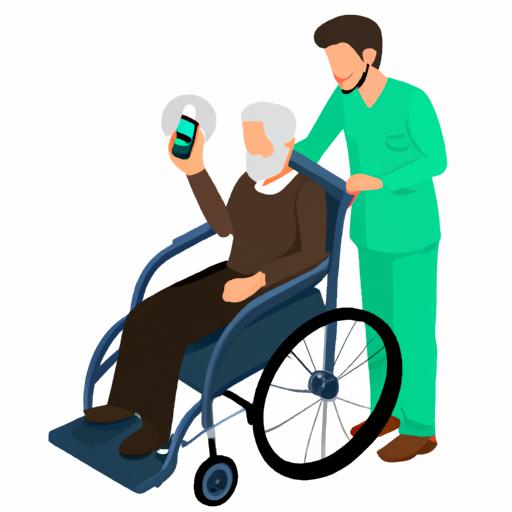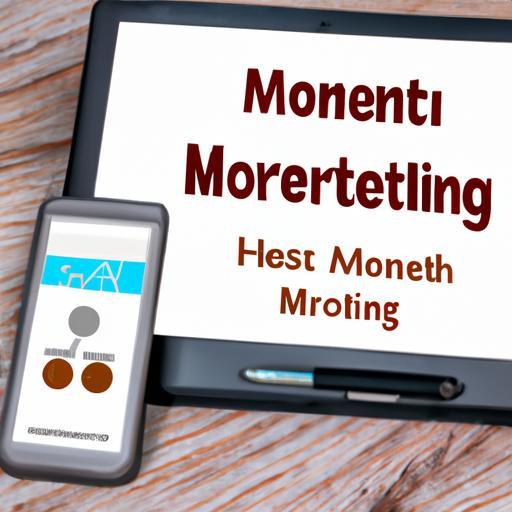In an era of evolving technology and shifting demographics, the demand for innovative solutions in elderly care insurance continues to grow. One such groundbreaking development is remote health monitoring, a game-changing approach that combines cutting-edge technology with personalized care for our older population. This article explores the role of remote health monitoring in revolutionizing elderly care insurance, ensuring the well-being and safety of our senior citizens in a rapidly changing world.
Table of Contents
- 1. The Benefits of Remote Health Monitoring for Elderly Care Insurance
- 2. How Technology is Revolutionizing Elderly Care Insurance
- 3. The Future of Remote Health Monitoring for Senior Citizens
- 4. Maximizing Quality of Life with Remote Health Monitoring
- 5. How Remote Health Monitoring is Transforming Elderly Care Insurance
- 6. The Importance of Investing in Remote Health Monitoring for Senior Care
1. The Benefits of Remote Health Monitoring for Elderly Care Insurance
Remote health monitoring can revolutionize the way elderly care insurance is provided by offering numerous benefits to both the elderly individuals receiving care and the insurance companies providing coverage. By utilizing advanced technology, such as wearable devices and smart sensors, insurance companies can remotely monitor the health and well-being of their elderly clients in real-time. This proactive approach allows for early detection of any potential health issues, leading to timely interventions and improved health outcomes.
Moreover, remote health monitoring can help reduce the overall cost of elderly care insurance by preventing unnecessary hospitalizations and emergency room visits. Through continuous monitoring of vital signs, medication adherence, and daily activities, insurance companies can better assess the health status of their clients and tailor personalized care plans accordingly. This not only improves the quality of care provided but also promotes independence and autonomy for elderly individuals, allowing them to age gracefully in the comfort of their own homes.

2. How Technology is Revolutionizing Elderly Care Insurance
Technology has completely transformed the way elderly care insurance functions in recent years. One major way this has been achieved is through the implementation of telemedicine services. With the help of video conferencing and remote monitoring devices, seniors can now receive medical attention and consultations from the comfort of their own homes. This not only saves time and money for both the elderly individuals and insurance providers, but it also ensures that they receive timely and efficient care.
Additionally, wearable technology has become increasingly popular in the elderly care insurance industry. Devices such as smartwatches and fitness trackers can monitor vital signs, track physical activity, and even alert emergency services in case of a fall or other medical emergency. This real-time data allows insurance providers to better assess risk factors, tailor coverage plans, and provide preventive care measures to ensure the well-being of their elderly clients. With these advancements, elderly individuals can now enjoy greater autonomy and peace of mind knowing that they have access to the latest technology to support their health and well-being.
3. The Future of Remote Health Monitoring for Senior Citizens
As technology continues to advance, looks promising. With the introduction of wearable devices, such as smartwatches and fitness trackers, seniors can now easily track their vital signs and activity levels from the comfort of their own homes. These devices can provide real-time data on heart rate, blood pressure, and even sleep patterns, allowing healthcare providers to monitor their patients remotely.
Additionally, telemedicine services are becoming more widely available, allowing seniors to consult with healthcare professionals without having to leave their homes. This can be especially beneficial for those who have mobility issues or live in remote areas. Through video calls and messaging platforms, seniors can receive medical advice, medication prescriptions, and even mental health support. is bright, offering convenience, accessibility, and peace of mind for both patients and their families.
4. Maximizing Quality of Life with Remote Health Monitoring
In today’s fast-paced world, remote health monitoring offers a game-changing solution for individuals looking to improve their quality of life. By utilizing cutting-edge technology, individuals can take control of their health from the comfort of their own homes. Remote health monitoring allows for real-time tracking of vital signs, medication adherence, and overall wellness, providing valuable insights for both patients and healthcare providers.
With remote health monitoring, individuals can enjoy a host of benefits, including:
- Convenience: No more trips to the doctor’s office for routine check-ups. Monitoring can be done from anywhere with an internet connection.
- Peace of Mind: Individuals can rest assured that their health is being monitored regularly, giving them the confidence to live their lives to the fullest.
- Early Detection: By tracking vital signs consistently, any changes or abnormalities can be identified early on, allowing for prompt intervention and treatment.
5. How Remote Health Monitoring is Transforming Elderly Care Insurance
Remote health monitoring technology has been making waves in the world of elderly care insurance, revolutionizing the way insurers assess and manage risks for older adults. By utilizing innovative devices and platforms, insurers can now track the health and wellness of their policyholders in real-time, allowing for more accurate pricing and personalized care plans. This shift towards proactive monitoring has the potential to not only improve the quality of care for seniors, but also reduce costs and prevent costly emergencies.
With the rise of remote health monitoring, insurers are able to offer more comprehensive coverage options that cater to the unique needs of older adults. From wearable devices that track vitals to smart home sensors that detect falls, these technologies provide valuable data that allow insurers to better understand the health status of their policyholders. Additionally, remote monitoring enables timely interventions and preventive measures, ultimately enhancing the overall quality of care for elderly individuals. Embracing these advancements in technology is essential for insurers looking to stay competitive in the ever-evolving landscape of elderly care insurance.
6. The Importance of Investing in Remote Health Monitoring for Senior Care
Remote health monitoring is a crucial tool in ensuring the well-being of seniors as they age. With advancements in technology, seniors can now receive the care they need from the comfort of their own homes. By investing in remote health monitoring, caregivers can keep track of vital health metrics such as blood pressure, heart rate, and glucose levels without the need for frequent visits to the doctor’s office.
One of the key benefits of remote health monitoring for senior care is the ability to detect any health issues early on. By continuously monitoring health data, caregivers can identify any abnormalities or warning signs and take proactive measures to address them. This not only leads to better health outcomes for seniors but also provides peace of mind for both seniors and their loved ones. Additionally, remote health monitoring allows for more personalized care plans, as caregivers can tailor interventions based on individual health data and trends over time.
remote health monitoring for elderly care insurance offers a promising solution to improve the quality of life for seniors while providing peace of mind for their loved ones. By utilizing technology to track and analyze vital health data, insurance companies can better tailor their coverage to meet the specific needs of each individual. This innovative approach not only promotes proactive and personalized care but also helps to reduce healthcare costs in the long run. As we continue to embrace advancements in telehealth and digital healthcare, it is exciting to see how remote health monitoring will continue to revolutionize the way we care for our elderly population.
